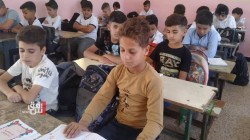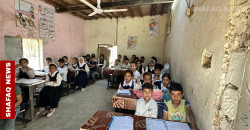High smoking rates among Iraqi students: study reveals major influences and risks

Shafaq News/ A troubling 24.5% prevalence of smoking among secondary school students in Iraq, driven by peer pressure, family habits, and media influence, underscored the urgent need for targeted interventions and comprehensive strategies to improve public health, according to a report published by CUREUS.
Abstract
Background
In developing communities like Iraq, adolescent smoking was a growing concern, impacting both societal norms and life expectancy. This study investigated the prevalence of smoking among secondary school students in Iraq and explored contributing factors.
Methods
A cross-sectional survey was conducted using a representative sample from Nineveh Governorate, encompassing urban and semi-rural areas. A total of 330 students from eight schools in Mosul were randomly selected. Data was collected via a standardized, anonymous questionnaire based on the Global Youth Tobacco Survey (GYTS). The questionnaire covered sociodemographic details, smoking behavior, and perceptions of smoking's risks. Data analysis utilized SPSS version 26, with logistic regression identifying significant factors influencing smoking initiation.
Results
The study found a 24.5% smoking prevalence among participants, with 30% of males and 7% of females reporting smoking. Hookah (Shisha) was the most common type of smoking, with about one-third of smokers engaging in daily use. Significant factors influencing smoking included peer pressure (OR=3.49, P<0.001), family smoking (OR=1.769, P=0.019), stress (OR=2.23, P=0.04), and personality traits like stammering and jealousy (OR=2.58, P=0.013; OR=2.22, P=0.017). Media influence, such as from movie stars, also played a notable role (OR=1.492, P=0.045).
Conclusion
The prevalence of smoking among Iraqi secondary school students highlighted a need for targeted interventions. Strategies such as comprehensive school-based educational programs and smoke-free policies could improve public health outcomes.
Introduction
Smoking initiation during adolescence significantly impacted future smoking prevalence. Early intervention was crucial for reducing adult tobacco use and promoting sustainability. The average age of smoking initiation had decreased, making adolescents particularly vulnerable. Tobacco use was a major cause of preventable deaths globally, with waterpipe smoking gaining popularity despite its harmful effects. Smoking adversely affected adolescent physical and psychological development, increasing the risk of conditions like asthma and cardiovascular diseases.
Materials & Methods
The study used a multistage cluster sampling method to recruit students from Nineveh Governorate. Participants included those aged 12-20 years who were present at school on the survey day. The sample size calculation considered an error level of 5% and an estimated prevalence of 21%. Data was collected using a self-administered questionnaire adapted from the GYTS and analyzed using SPSS version 26.
Ethical Considerations
Approval was obtained from the Medical Research Ethics Committee and the Directorate General of Education. Participants’ anonymity was ensured, and participation was voluntary with no incentives provided.
Data Analysis
Data was entered into Microsoft Excel and analyzed using SPSS version 26. Descriptive statistics summarized the data, while logistic regression identified significant predictors of smoking initiation. An odds ratio (OR) with a p-value < 0.05 indicated statistical significance.
Results
The study revealed a 24.5% smoking rate among 330 students, with higher prevalence among males (30.5%) compared to females (7.1%). Shisha was the most common smoking type. Daily smoking was reported by about one-third of smokers. Significant predictors included peer pressure, family smoking, stress, and personality traits, with media influence also noted.
Discussion
The study highlighted a troubling increase in smoking prevalence among Iraqi students, with significant differences in smoking rates between genders. The findings suggested that peer pressure, family habits, and media influence were strong predictors of smoking initiation. The study called for comprehensive interventions, including educational programs and stricter smoke-free policies.
Conclusions
Addressing the rising smoking rates among Iraqi students required targeted strategies and public health initiatives. Implementing evidence-based interventions could improve health outcomes and help reduce smoking prevalence among youth.



